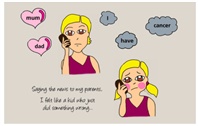|
In this issue
|
12 September 2014
|
|
| |
|
"Research is to see what everybody else has seen and to think what nobody else has thought".
Albert Szent-Gyorgyi
|
|
|
| |
National Aboriginal and Torres Strait Islander Health Survey: Biomedical results 2012-2013
|
|
Results from the largest-ever biomedical survey of Indigenous Australians indicate that diabetes is significantly more prevalent and occurs at a younger age than in non-indigenous people. The survey collected blood and urine samples from 3300 Aboriginal and Torres Strait Islander adult volunteers to carry out laboratory tests for markers of chronic diseases. Diabetes prevalence for Indigenous people aged 35-44 years was on a par with non-Indigenous people 20 years their senior.
Comorbidities were common among Indigenous people the pathology tests showed. More than ½ the Indigenous people with diabetes also had signs of kidney disease (53% vs. 32% of non-Indigenous people). Cardiovascular comorbidity was also higher in Indigenous people with diabetes (45.1% with high triglycerides vs. 31.8% in the non-Indigenous population).
Source: ABS 10 Sept 2014 First issue
|
|
|
| |
Breast cancer is not just an older woman’s disease
|
|
Almost 800 young women (under 40 years of age ) are diagnosed with breast cancer in Australia each year. Although breast cancer is not common in women in their 20's and 30's those affected are typically diagnosed with more aggressive sub-types of the disease and larger tumours - which means poorer prognosis. "More young women die of their disease, compared with older women, and they have a higher rate of recurrence and spread from the breast to other parts of the body, such as the bone, liver, lungs and brain".
Source: National Breast Cancer Foundation - report Sept 2014 |

|
|
|
| |
Strategies to prevent healthcare-associated infections in acute care hospitals: 2014 update
|
|
The 2014 Compendium Updates represent practical recommendations by the leading champions in infection prevention and healthcare quality improvement.
- Synthesizes best evidence for the prevention of surgical site infections, central line-associated bloodstream infections, catheter-associated urinary tract infections, ventilator-associated pneumonia, Clostridium difficile, MRSA and hand hygiene
- Highlights basic HAI prevention strategies plus advanced approaches for outbreak management and other special circumstances
- Recommends performance and accountability measures to apply to individuals and groups working to implement infection prevention practices.
Source: Infection control & hospital epidemiology Sept 2014: 35(Suppl 2) Special issue
Print copy on display in the library
|
|
|
| |
Preventing suicide: a global imperative - WHO
|
|
This is the first WHO report of its kind and it aims to increase awareness of the public health significance of suicide and suicide attempts. Statistics indicate that someone dies by suicide somewhere in the world every 40 seconds! Suicide is the 2nd leading cause of death globally for 15-29 year olds and for each suicide there are indications that 20 others are attempting. The report recommends that health-care services need to incorporate suicide prevention as a core component.
Source: World Health Organization, 2014
|
|
|
| |
Blueprint for an ageing Australia – thought leadership
|
|
This report puts forward the concept that ageing is an asset, not a liability on society. It challenges the orthodox perception portrayed by media and policy makers that 'the ageing population' is a burden on society rather than considering the prospect that older Australians can continue to contribute to society and the economy, just in different ways. The premise for the Blueprint is: "that living longer is a good thing, that the rising average age of our population is a vindication of advances in science and health policy".
Source: Blueprint for an Ageing Australia, 2014
|
|
|
| |
Print journals received and currently on display
|
|
The following journals titles received this week are only available in print format within the library:
Hospital & aged care. Vol. 9/10, 2014
Journal of sexual medicine. Vol. 11, no. 8, 2014
Nature medicine. Vol. 20, no. 8, August 2014
Nursing times. Vol. 110, no. 36, 3 September 2014
All our journal titles with electronic access are available via the A-Z Journal List.
(Please note: outside the Austin Health network you will need your Library barcode no. & PIN for access) |
|
|
| |
|
|
| |